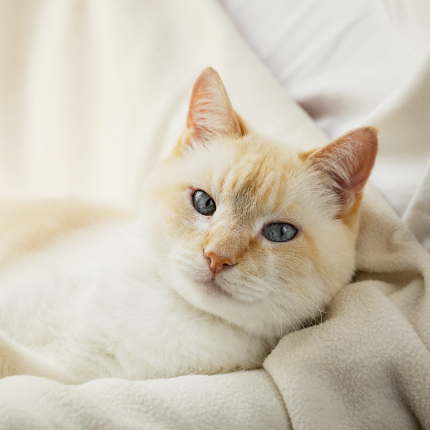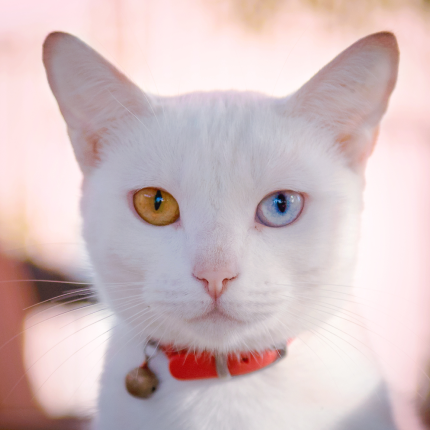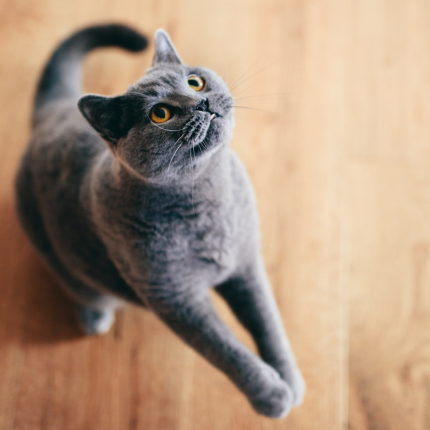Rarest Cat Colors and Patterns

Cats captivate their owners with their intelligence and playful antics. In addition to their charming behaviors, these feline companions exhibit a fascinating array of fur colors and patterns, some of which are quite common while others are considered exceptionally rare.
But what exactly are these elusive hues? We consulted cat experts to shed light on the matter. Once you’ve explored the rare cat colors, you might find yourself intrigued by cute cat breeds and fluffy cat breeds and deciphering cat body language as well.
Cream
This delicate buff shade ranks among the rarest cat colors, boasting a captivating blend of soft white with a hint of orange undertone. Cream-colored cats, technically categorized as orange cat breeds, result from a dilution gene affecting genetically red or ginger cats. Interestingly, cream-colored cats faced scrutiny from breeders in England, with those deemed insufficiently red often being neutered or sent to the United States.
Lilac
Yes, you read that right—a purple hue on a kitty! The lilac color in cats manifests as a pale brown so light that it appears to possess a subtle purple tint. While not as vividly purple as the name suggests, this lilac hue is undeniably rare among felines. It’s more commonly found as a point color in Persian, Siamese, and Balinese breeds, as well as a solid color in the Oriental Shorthair, arising from a recessive homozygote gene combination inherited from both parents.
Fawn
Similar to cream yet distinct in its own right, fawn is an uncommon diluted coat color, lighter than the norm. This rare coloring, primarily observed in pedigree or purebred cats bred for their distinct coat hues, is attributed to the cinnamon gene, which imparts a lighter appearance to the fur. Notably, the Cat Fancier Association employs the term “fawn” to describe the light-brown coloring found in breeds like the Abyssinian, Oriental Shorthair, and British Shorthair.
Colorpoint
Unfamiliar with this term? Colorpoint patterns emerge from domestic cat breeding. They feature a lighter body color with darker hues around the ears, paws, and nose. While more prevalent than some rare colorings, the colorpoint pattern remains a rarity among felines.
Blue
Also known as silver or gray, blue cats boast a rare coloring that has its roots in Russia, hence the common reference to this hue as Russian Blue. While not exceedingly common, blue cats are not as rare as some other unique colorings on this list.
These felines exhibit a captivating blend of silver or gray fur, often accompanied by a mesmerizing array of eye colors ranging from classic yellow to striking green, with occasional blue hues as well. The blue coloring in cats is governed by recessive genes, necessitating both parents to carry and pass on these genes to their offspring for the expression of this distinct hue. Therefore, breeding two blue cats together can result in a litter of stunning silver-coated kittens.
Rosette
The rosette pattern, characterized by swirling brown, black, and white spots reminiscent of rose petals, is an exceptionally rare pattern among domestic cats, akin to those found on large wildcats like leopards. Governed by the agouti gene, closely linked to tabby patterns, the rosette pattern is a distinctive feature of very few domestic cat breeds.

Featured Articles

The Odd-Eyed Cat (AKA Heterochromia)
Cats are already beautiful and fascinating creatures, but people are bound to take notice when they have something as captivating as two different colored eyes. Odd-eyed cats always have one blue eye paired with either a green, yellow, or brown eye. This form of heterochromia occurs in other animals, including…

Why Do Cats Roll Over Into Their Backs But Not Let You Touch Their Bellies?
It’s common knowledge dogs love to have their tummies rubbed when they freely lay down before you and roll onto their backs. But, if you’re also familiar with cats, you know that when they roll onto their backs with their bellies exposed, rubbing the belly will most likely result in…

Polydactyl Cats: Just More Beans to Love
Polydactyl cats have become extremely popular in recent times. As a result, more and more people are interested in learning more about this six-toed cat and want to get one of their own. If you are a cat lover intrigued by polydactyl cats, you have come to the right place….
